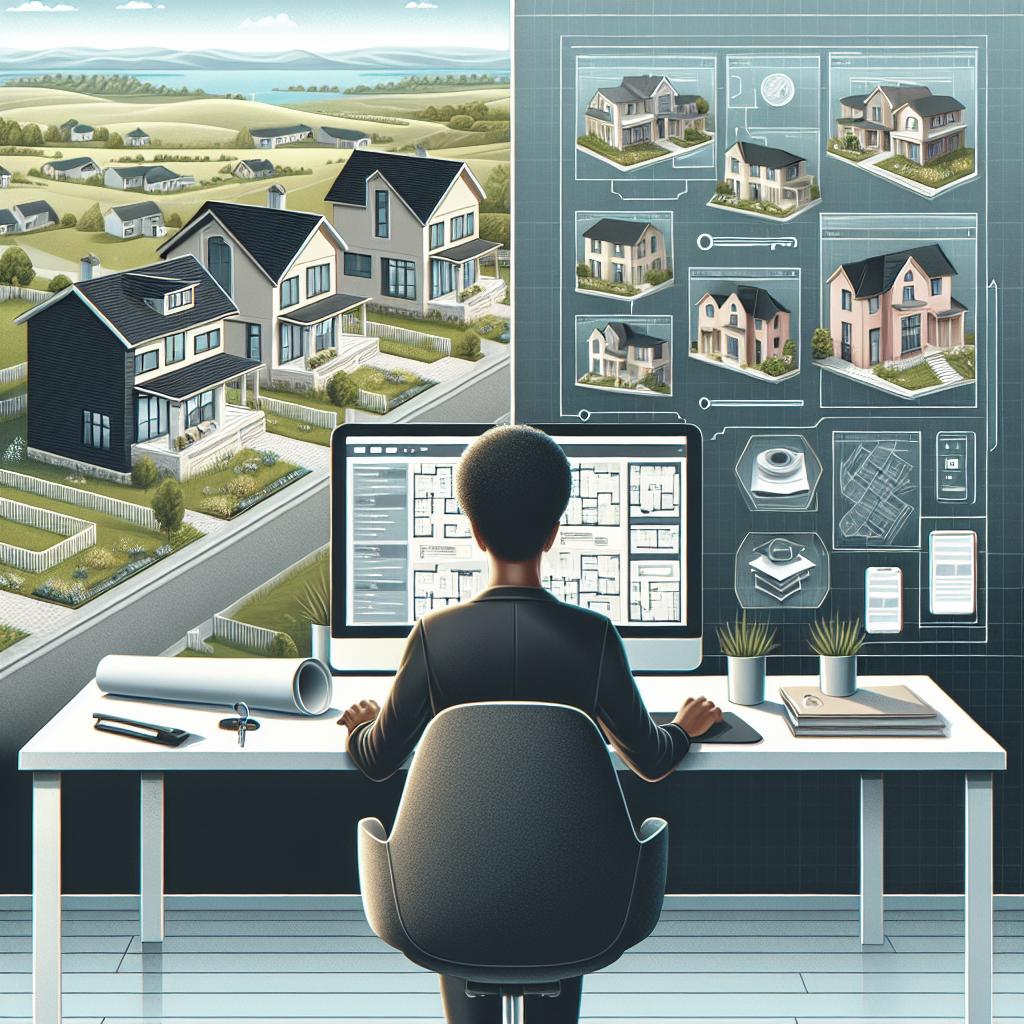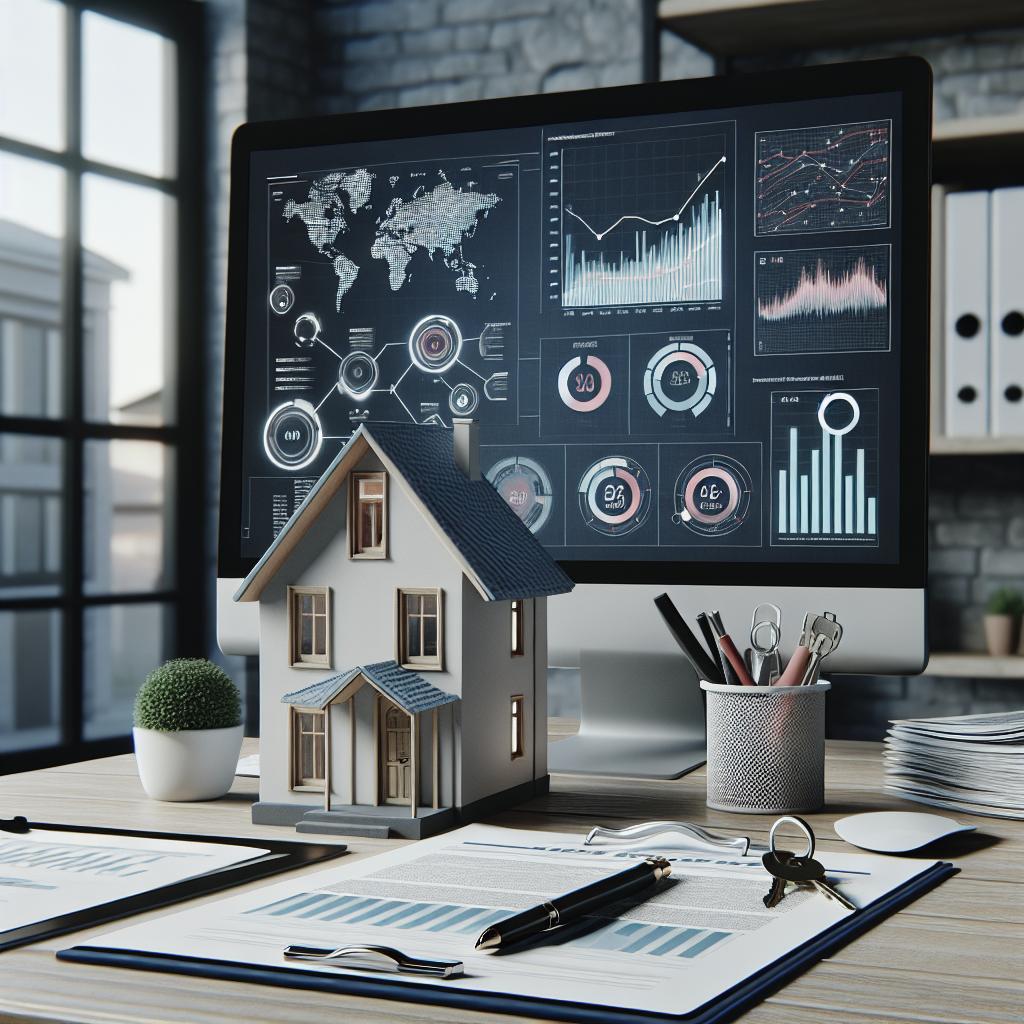Managing a rental property remotely might seem daunting, but with the right strategies and tools in place, it can be a seamless process. This blog post will explore what remote rental property management entails, followed by a comprehensive 12-step guide to efficiently managing property from afar, whether it’s across town or across the country. From enlisting a local representative to leveraging technology for communication and rent collection, we’ll cover practical steps landlords can follow. Additionally, we’ll highlight how BFPM (Best For Property Management) can simplify and enhance your remote property management journey. By the end, you’ll be equipped with insights and actionable tips to ensure your rental property remains well-maintained and profitable, no matter your physical distance from it. —
What is a Remote Rental Property?
Simply put, a remote rental property is one that is managed by a landlord who doesn’t live nearby. This could mean managing real estate from a different city, state, or even country. The primary challenges with remote property management include keeping up with maintenance, handling tenant issues, and ensuring rents are collected on time without being physically present. Remote property management can be highly beneficial if done correctly. It allows landlords to invest in burgeoning real estate markets without worrying about geographical constraints. However, to manage such properties effectively, leveraging technology and building a local support system becomes essential.
12 Steps to Remotely Manage a Rental Property
1. Have a Local Representative
When managing a property remotely, having a trusted local representative is critical. This person can be a friend, family member, or a hired hand who is close by and can act on your behalf in emergencies. They can provide a physical presence at the property when needed and help with tasks that require someone on-site. In addition to emergency situations, a local representative can assist in regular inspections, accept deliveries, and manage minor repairs. They serve as your eyes and ears, offering peace of mind when you’re miles away.
2. Build a Trusted Local Team
Building a reliable local team is essential for the smooth remote management of a rental property. This team can include a property manager, a handyman, an electrician, a plumber, and any other maintenance professionals. Having a group of dependable experts ensures that any issues can be swiftly addressed without you having to be there in person. Networking within the local real estate community can also help you find reputable and reliable service providers. Establishing a good relationship with these professionals will ensure they prioritize your property when emergencies arise.
3. Figure Out a Way to Do Property Showings
One of the significant challenges of managing a property remotely is conducting property showings. Utilizing technology, such as virtual tours and video calls, can make this process easier. Prospective tenants can view the property online and get a real-time feel of the space through a live video tour. For those who must see the property in person, considering a lockbox system or hiring a local real estate agent to handle showings can save time and hassle. This way, potential tenants can safely and conveniently view the property without waiting for your availability.
4. Have a Tenant Screening Solution in Your Back Pocket
Screening tenants is crucial in ensuring your property is occupied by responsible and reliable individuals. Remote management can complicate this process, but utilizing online tenant screening services can streamline it. These platforms can conduct background checks, verify credit scores, and even assess rental history. Having a tenant screening solution ensures that you make informed decisions about who will be living in your property. It mitigates risks and helps maintain the property’s condition and value over time.
5. Get a Digital Document Signing Tool
Gone are the days when important documents had to be signed in person. Tools like DocuSign and Adobe Sign have revolutionized the way legal documents are handled, making it simple to sign leases and other contracts digitally. This is especially useful for remote property management. Digital document signing tools provide secure and legally binding solutions to handle all paperwork efficiently. With these tools, you can send, sign, and store documents electronically, ensuring a smooth and hassle-free process for both you and your tenants.
6. Create Easy Lines of Communication
Clear and open communication with your tenants is crucial, particularly when managing rental properties remotely. Setting up multiple communication channels ensures that tenants can reach you when needed. Emails, phone calls, text messages, and property management platforms can facilitate this. Using a consistent and professional communication platform helps in addressing tenant concerns promptly, organizing maintenance schedules, and ensuring that important notices are delivered promptly. Additionally, regular check-ins can proactively address any issues before they become significant problems.
7. Manage Rent Payments Online
Managing rent payments online offers convenience and efficiency for both landlords and tenants. Platforms like PayPal, Venmo, or dedicated property management software like Cozy or Buildium, provide secure and straightforward options for handling rent transactions. Online rent payment systems minimize the risk of late or missed payments and offer automatic reminders and receipts. They also allow for easy tracking and recording of transactions, essential for financial planning and reporting.
8. Create a Tenant Portal
A tenant portal is an invaluable tool for remote property management. It serves as a one-stop platform where tenants can make payments, submit maintenance requests, and access essential documents. Utilizing property management software can streamline many administrative processes. By providing a tenant portal, you enhance the tenant’s experience, making it easy for them to interact with you and manage their tenancy. This increased convenience can lead to higher tenant satisfaction and retention rates, which are beneficial in the long run.
9. Automate Bookkeeping
Bookkeeping is an integral part of property management, and automating it can save time and reduce errors. Software like QuickBooks or Xero can simplify the tracking of income and expenses, generate financial reports, and streamline tax preparation. Automation tools help you maintain accurate and up-to-date records, giving you a clear overview of your investment’s financial health. This is especially useful for remote landlords who may not have immediate access to physical financial documents.
10. Enforce the Rules
It’s essential to enforce the rules and policies set out in your lease agreement to maintain the property’s integrity and ensure a harmonious living environment for all tenants. Be clear and consistent about your rules and the consequences for violating them. Having clear policies in place and sticking to them prevents misunderstandings and provides a guideline for both you and your tenants to follow. It also protects your investment by ensuring that the property is kept in good condition.
11. Schedule Property Visits
Even though you’re managing the property remotely, scheduling periodic visits is essential. These visits allow you to inspect the property’s condition, address any concerns, and plan for future maintenance needs. If personal visits are not feasible, consider having your local representative or property manager perform these inspections and report back to you. Using a checklist during these inspections ensures that nothing is overlooked, and regular visits help in maintaining the property, reducing the risk of major issues developing unnoticed.
12. Install Security Cameras
Installing security cameras can be a great deterrent for potential trespassers and can help you monitor your property remotely. Modern security systems offer features like real-time alerts, live video streaming, and cloud storage for recorded footage, accessible via smartphones or computers. However, it’s essential to inform your tenants about the presence of security cameras and ensure their installation complies with local laws regarding privacy. Security cameras enhance the security of your property and provide peace of mind.
Managing Rental Property Remotely With BFPM
BFPM (Best For Property Management) offers a comprehensive suite of tools designed to simplify remote property management. From tenant screening to rent collection, BFPM provides integrated solutions to ensure your property is well managed from anywhere in the world. With BFPM, landlords can access features like maintenance management, financial reporting, tenant portals, and communication tools, all from a single platform. This all-in-one approach reduces the complexity of managing a rental property and empowers landlords with the technology to operate efficiently and effectively. Additionally, BFPM’s user-friendly interface and robust support system make it an excellent choice for both experienced landlords and those new to remote property management. By leveraging BFPM’s capabilities, you can enjoy peace of mind knowing your property is in good hands. —
| Step | Action | Benefit |
|---|---|---|
| 1 | Have a Local Representative | Provides a physical presence for emergencies and regular inspections |
| 2 | Build a Trusted Local Team | Ensures quick and reliable maintenance and repair services |
| 3 | Figure Out a Way to Do Property Showings | Makes property viewings convenient through virtual tours or local agents |
| 4 | Have a Tenant Screening Solution | Allows informed decisions by verifying tenant backgrounds |
| 5 | Get a Digital Document Signing Tool | Facilitates secure and efficient signing of legal documents |
| 6 | Create Easy Lines of Communication | Ensures prompt and organized communication with tenants |
| 7 | Manage Rent Payments Online | Makes rent payment process efficient and trackable |
| 8 | Create a Tenant Portal | Enhances tenant experience by offering a centralized, easy-to-use platform |
| 9 | Automate Bookkeeping | Saves time and ensures accurate financial records |
| 10 | Enforce the Rules | Maintains property integrity and tenant harmony |
| 11 | Schedule Property Visits | Ensures regular inspections and maintenance |
| 12 | Install Security Cameras | Enhances property security and offers peace of mind |


